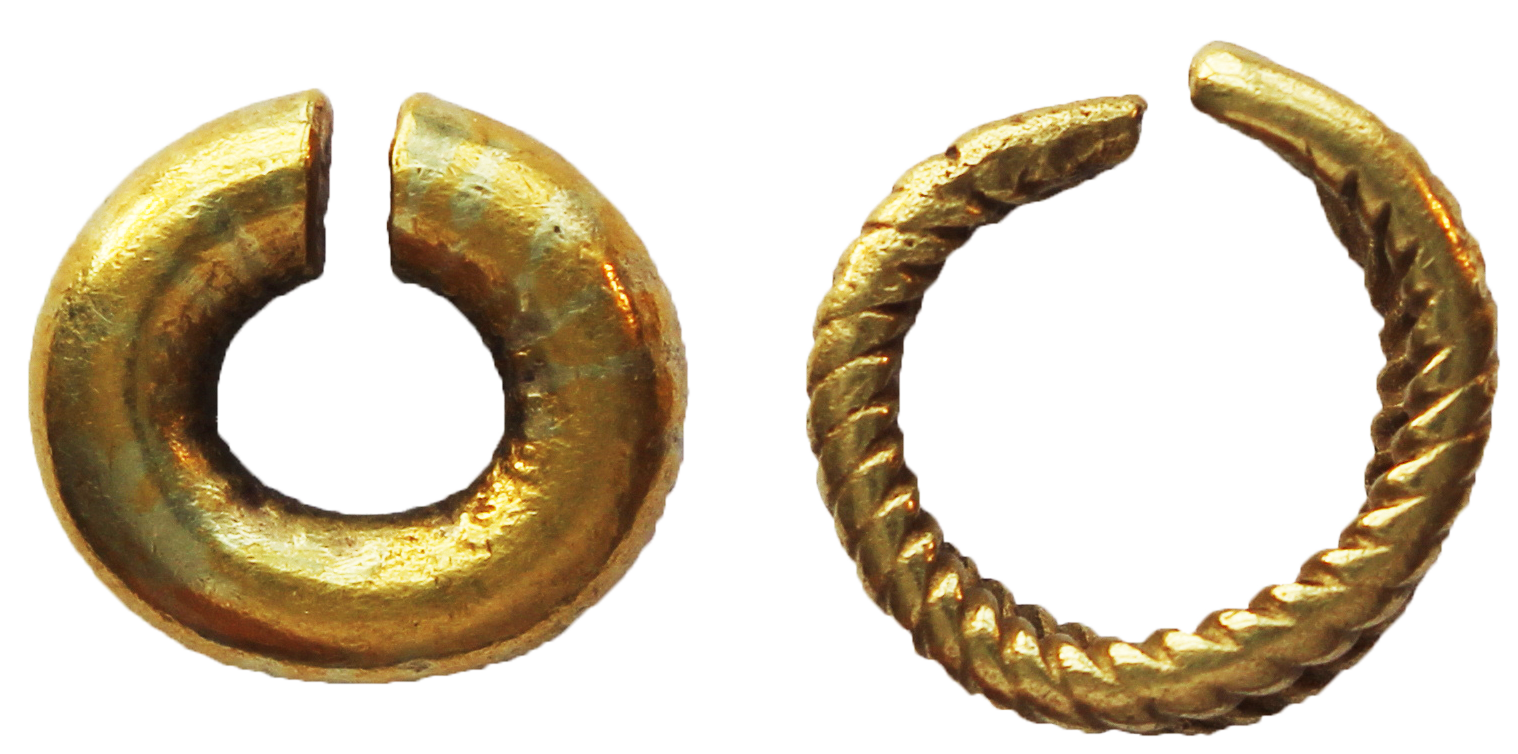
History
Earliest use of money (Info)
Julius Caesar gives us the only contemporary account of coinage in Iron Age Britain (1). In his 54 BC. report on military campaigns there, he observes: "For money they use either bronze or gold coins or iron ingots of fixed weights". This mention, tantalizingly brief, does not confirm whether he actually saw the currency he describes. However, finds of both coins and ingots today substantiate Caesar's report.
Iron Currency Bars
Iron ingots, commonly called Currency Bars (info) (2) exist in large numbers today there are over a thousand known examples. They occur in four varieties: sword-shaped, spit-shaped, ploughshares and bay-leaf shaped. Most are retained in museums, however, some are held in private collections. Iron objects require chemical treatment to remove corrosive agents and stabilize the metal; ideally they should be conserved in a humidity-controlled environment.
Currency bars were introduced in Britain during the Second Century BC. and continued in use until the middle of the First. It is not certain whether all served as money, nor is there evidence they circulated side by side with normal coins.
The most common variety, the sword-shaped bars, certainly did function as a form of currency. They show two common attributes of money: they conform to a weight standard and have a standard, easily recognized appearance. Furthermore, iron was a valuable commodity at the time and the bars were often hoarded. In this manner, they functioned as a means of wealth-storage. On a number of hillforts bars have been found cut up, perhaps to be used as smaller denominations. It is also possible they were in the process of being converted to scrap metal for fashioning iron tools. The suggestion that sword-shaped bars served as weapons has been disproved by recent metallurgical analysis showing the metal quality was not good enough for this purpose.
Sword-shaped bars had a flat, narrow blade between 780 and 890 mm long and weighed between 400 and 500 gms. The hilt was pinched and formed around a wooden dowel. Traces of mineralized wood have been found inside some of them. This variety of bar was used in what would later become the territories of the Corieltauvi, Dobunni, Durotriges and Atrebates.
The three remaining varieties of bar, all rare, are found individually, not hoarded. The ploughshare-bars, with a thick, heavy blade are found along the Thames Valley, and some may have been votive offerings, deposited in the river. A few findspots also occur in the West Midlands. The spit-shaped bars have a thinner blade and shorter hilt, and are found in the area later associated with the Dobunni. The Bay-leaf type bars, known from only a few Cambridgeshire examples, have a long hilt with semicircular section. It is uncertain whether any of these three varieties functioned as currency.
Ring Money
We now know that the gold rings once considered a form of money all date to the Middle Bronze Age. At such an early date they can hardly have functioned as a form of money. They are now thought to have been used only as personal ornaments. They may, however, also have been used as a means of storing wealth (one of the traditional uses of money).
The gold rings surviving today occur in three varieties, all of them open-ended. The commonest variety is made from a thin, single-strand of twisted gold with plain, tapering ends. The second type, also reasonably common, is thicker and appears to be of twisted silver, with a gold-plating or wash. They have a smooth surface with the ends square-cut. This type occasionally appears with some of the gold worn off, revealing the silver core. The third type, which is extremely rare, is made of two strands of twisted gold soldered together at one point to form a double ring. The strands have plain, tapering ends, much like the first type of ring.
Large bronze rings are known from the Iron Age, and these are sometimes described as ring money. These are probably nothing more than bracelets, and are not likely to have been a form of currency. Smaller examples were probably strap-ends, and the heaviest ones may be spindle-whorls. None are likely to represent any sort of currency.
Next section: Imported Coinages – Introduction

